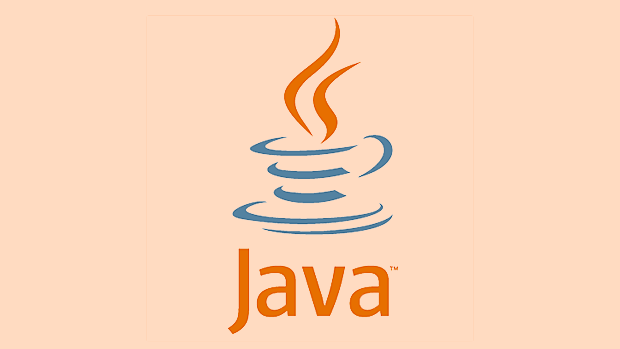Preventing server-side template injection (SSTI) requires four aspects: 1. Use security configurations, such as disabling method calls and restricting class loading; 2. Avoid user input as template content, only variable replacement and strictly verify input; 3. Adopt sandbox environments, such as Pebble, Mustache or isolating rendering context; 4. Regularly update the dependent version and review the code logic to ensure that the template engine is configured reasonably and prevent the system from being attacked due to user-controllable templates.

Server-side template injection (SSTI) is a security issue that is easily overlooked but has a very high potential risk in Java applications. The template engine is originally intended to make it easier for developers to generate dynamic content, but if used improperly, the attacker may execute arbitrary code through template injection, which directly leads to the system being controlled. Although Java does not easily trigger SSTI like Python or PHP, the consequences will be equally serious if there is a problem.

The following is a few common perspectives to talk about how to prevent SSTI in Java projects.
Use a secure template engine configuration
Many template engines allow expression execution by default, such as Thymeleaf, Freemarker, and Velocity. If these engines do not have restrictions, they will easily become the entrance to SSTI.

Take Freemarker as an example. By default, it allows calling Java methods, such as ${'abc'.getClass().getName()} to get the class name and further execute arbitrary code. To avoid this, you can:
- Disable method calls:
cfg.setMethodExposureLevel(Configuration.MethodExposure.LIMITED); - Disable class template loading: Avoid user input as template content
- Set a whitelisting mechanism to limit accessible classes and methods
Similarly, Thymeleaf has disabled method calls in expressions by default starting with 3.0, but it is still recommended to check the configuration to make sure that SpringEL 's high-risk features are not enabled.

Avoid using user input as template content
The core problem of SSTI is that the template content is controllable. If your app allows users to enter a piece of text and render it as a template, it's almost like opening the door to thieves.
For example, some systems allow users to customize email templates, page content, etc. If these contents are directly handed over to the template engine for processing, it is easy to be injected into malicious expressions.
suggestion:
- Don't let users control the template structure, only variable replacement is allowed
- If you have to let the user edit the template, consider using whitelist variables, or rendering with a sandbox environment
- Strict checksum escape of user input, especially special characters such as
${},#{}, etc.
Render user templates using sandboxes or isolated environments
If your application does require user-defined templates, consider using some sandboxed template engines, or isolate risk by limiting context.
For example:
- Using Pebble , it does not execute arbitrary method calls by default
- Using Mustache , it is a logically independent template language and is not easy to trigger SSTI
- For Velocity, you can inherit
EventCartridgeto limit template behavior
In addition, you can also consider running the rendering of the user template in a separate JVM or container, restricting its permissions, such as not loading sensitive classes, prohibiting reflection, etc.
Regularly review how templates are used and dependent versions
The template engine itself may also have security vulnerabilities, such as SSTI-related CVEs that have appeared in older versions of Freemaker or Velocity.
suggestion:
- Keep template engine dependencies updated with the latest stable version
- Scan project dependencies using OWASP Dependency-Check or similar tools
- Review the way template calls in the code to avoid using
eval-like logic
In general, although SSTI in Java is not as common as other languages, it cannot be taken lightly. The key point is: don't let users control the template content, configure the template engine reasonably, and use the sandbox environment if necessary. Basically all this is it, security issues are often not very complicated, but are easily overlooked.
The above is the detailed content of Java Security for Server-Side Template Injection. For more information, please follow other related articles on the PHP Chinese website!

Hot AI Tools

Undress AI Tool
Undress images for free

Undresser.AI Undress
AI-powered app for creating realistic nude photos

AI Clothes Remover
Online AI tool for removing clothes from photos.

Clothoff.io
AI clothes remover

Video Face Swap
Swap faces in any video effortlessly with our completely free AI face swap tool!

Hot Article

Hot Tools

Notepad++7.3.1
Easy-to-use and free code editor

SublimeText3 Chinese version
Chinese version, very easy to use

Zend Studio 13.0.1
Powerful PHP integrated development environment

Dreamweaver CS6
Visual web development tools

SublimeText3 Mac version
God-level code editing software (SublimeText3)

Hot Topics
 How to iterate over a Map in Java?
Jul 13, 2025 am 02:54 AM
How to iterate over a Map in Java?
Jul 13, 2025 am 02:54 AM
There are three common methods to traverse Map in Java: 1. Use entrySet to obtain keys and values at the same time, which is suitable for most scenarios; 2. Use keySet or values to traverse keys or values respectively; 3. Use Java8's forEach to simplify the code structure. entrySet returns a Set set containing all key-value pairs, and each loop gets the Map.Entry object, suitable for frequent access to keys and values; if only keys or values are required, you can call keySet() or values() respectively, or you can get the value through map.get(key) when traversing the keys; Java 8 can use forEach((key,value)->
 Comparable vs Comparator in Java
Jul 13, 2025 am 02:31 AM
Comparable vs Comparator in Java
Jul 13, 2025 am 02:31 AM
In Java, Comparable is used to define default sorting rules internally, and Comparator is used to define multiple sorting logic externally. 1.Comparable is an interface implemented by the class itself. It defines the natural order by rewriting the compareTo() method. It is suitable for classes with fixed and most commonly used sorting methods, such as String or Integer. 2. Comparator is an externally defined functional interface, implemented through the compare() method, suitable for situations where multiple sorting methods are required for the same class, the class source code cannot be modified, or the sorting logic is often changed. The difference between the two is that Comparable can only define a sorting logic and needs to modify the class itself, while Compar
 How to handle character encoding issues in Java?
Jul 13, 2025 am 02:46 AM
How to handle character encoding issues in Java?
Jul 13, 2025 am 02:46 AM
To deal with character encoding problems in Java, the key is to clearly specify the encoding used at each step. 1. Always specify encoding when reading and writing text, use InputStreamReader and OutputStreamWriter and pass in an explicit character set to avoid relying on system default encoding. 2. Make sure both ends are consistent when processing strings on the network boundary, set the correct Content-Type header and explicitly specify the encoding with the library. 3. Use String.getBytes() and newString(byte[]) with caution, and always manually specify StandardCharsets.UTF_8 to avoid data corruption caused by platform differences. In short, by
 Using std::chrono in C
Jul 15, 2025 am 01:30 AM
Using std::chrono in C
Jul 15, 2025 am 01:30 AM
std::chrono is used in C to process time, including obtaining the current time, measuring execution time, operation time point and duration, and formatting analysis time. 1. Use std::chrono::system_clock::now() to obtain the current time, which can be converted into a readable string, but the system clock may not be monotonous; 2. Use std::chrono::steady_clock to measure the execution time to ensure monotony, and convert it into milliseconds, seconds and other units through duration_cast; 3. Time point (time_point) and duration (duration) can be interoperable, but attention should be paid to unit compatibility and clock epoch (epoch)
 How does a HashMap work internally in Java?
Jul 15, 2025 am 03:10 AM
How does a HashMap work internally in Java?
Jul 15, 2025 am 03:10 AM
HashMap implements key-value pair storage through hash tables in Java, and its core lies in quickly positioning data locations. 1. First use the hashCode() method of the key to generate a hash value and convert it into an array index through bit operations; 2. Different objects may generate the same hash value, resulting in conflicts. At this time, the node is mounted in the form of a linked list. After JDK8, the linked list is too long (default length 8) and it will be converted to a red and black tree to improve efficiency; 3. When using a custom class as a key, the equals() and hashCode() methods must be rewritten; 4. HashMap dynamically expands capacity. When the number of elements exceeds the capacity and multiplies by the load factor (default 0.75), expand and rehash; 5. HashMap is not thread-safe, and Concu should be used in multithreaded
 JavaScript Data Types: Primitive vs Reference
Jul 13, 2025 am 02:43 AM
JavaScript Data Types: Primitive vs Reference
Jul 13, 2025 am 02:43 AM
JavaScript data types are divided into primitive types and reference types. Primitive types include string, number, boolean, null, undefined, and symbol. The values are immutable and copies are copied when assigning values, so they do not affect each other; reference types such as objects, arrays and functions store memory addresses, and variables pointing to the same object will affect each other. Typeof and instanceof can be used to determine types, but pay attention to the historical issues of typeofnull. Understanding these two types of differences can help write more stable and reliable code.
 What is the 'static' keyword in Java?
Jul 13, 2025 am 02:51 AM
What is the 'static' keyword in Java?
Jul 13, 2025 am 02:51 AM
InJava,thestatickeywordmeansamemberbelongstotheclassitself,nottoinstances.Staticvariablesaresharedacrossallinstancesandaccessedwithoutobjectcreation,usefulforglobaltrackingorconstants.Staticmethodsoperateattheclasslevel,cannotaccessnon-staticmembers,
 What is a ReentrantLock in Java?
Jul 13, 2025 am 02:14 AM
What is a ReentrantLock in Java?
Jul 13, 2025 am 02:14 AM
ReentrantLock provides more flexible thread control in Java than synchronized. 1. It supports non-blocking acquisition locks (tryLock()), lock acquisition with timeout (tryLock(longtimeout, TimeUnitunit)) and interruptible wait locks; 2. Allows fair locks to avoid thread hunger; 3. Supports multiple condition variables to achieve a more refined wait/notification mechanism; 4. Need to manually release the lock, unlock() must be called in finally blocks to avoid resource leakage; 5. It is suitable for scenarios that require advanced synchronization control, such as custom synchronization tools or complex concurrent structures, but synchro is still recommended for simple mutual exclusion requirements.






